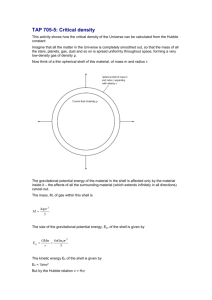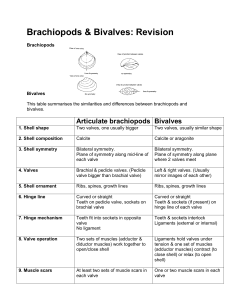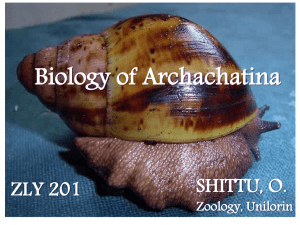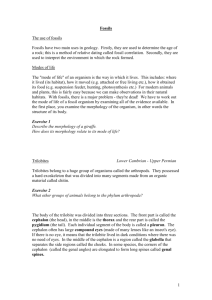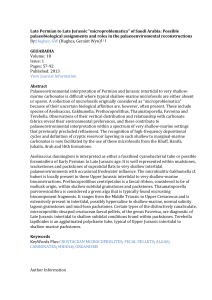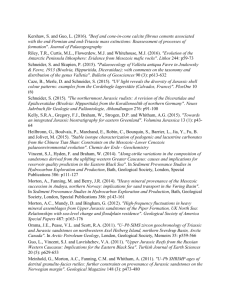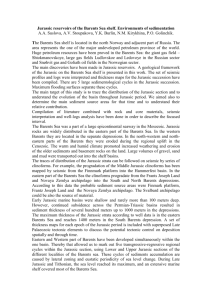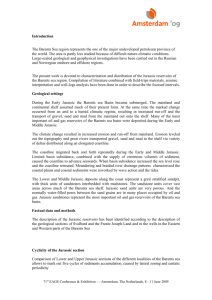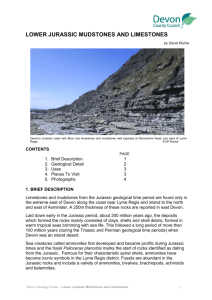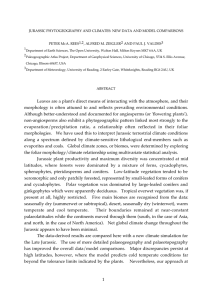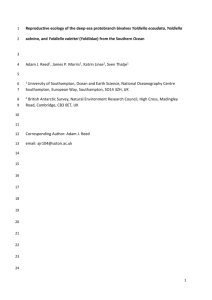Gryphaea factsheet
advertisement
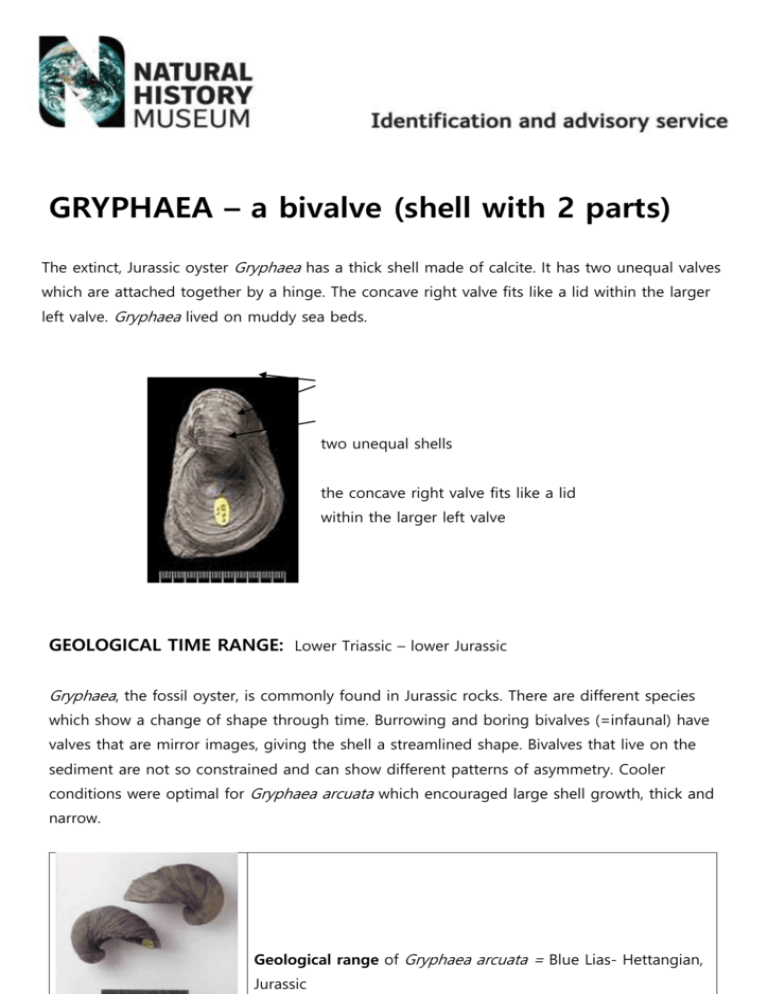
GRYPHAEA – a bivalve (shell with 2 parts) The extinct, Jurassic oyster Gryphaea has a thick shell made of calcite. It has two unequal valves which are attached together by a hinge. The concave right valve fits like a lid within the larger left valve. Gryphaea lived on muddy sea beds. two unequal shells the concave right valve fits like a lid within the larger left valve GEOLOGICAL TIME RANGE: Lower Triassic – lower Jurassic Gryphaea, the fossil oyster, is commonly found in Jurassic rocks. There are different species which show a change of shape through time. Burrowing and boring bivalves (=infaunal) have valves that are mirror images, giving the shell a streamlined shape. Bivalves that live on the sediment are not so constrained and can show different patterns of asymmetry. Cooler conditions were optimal for Gryphaea arcuata which encouraged large shell growth, thick and narrow. Geological range of Gryphaea arcuata = Blue Lias- Hettangian, Jurassic EVOLUTIONARY TRENDS Gradually through time, the shell of Gryphaea became bigger, thinner and flatter. The interpretation is that the wider shell provided better stability in energetic waters. The periods of evolution were driven by the need to adapt the shell for reclining on muddy, early Jurassic sea-floors. Adaptation to a stable food supply is thought to have driven the evolutionary increase in shell size; this trend can also be seen other early Jurassic bivalves. Increase in size affects physical stability which probably explains the shell becoming bigger, broader, thinner and flatter. Gryphaea - Fossil folklore Gryphaea arcuata was known in English folklore as “devil’s toenail” due to the curved shape. http://www.nhm.ac.uk/nature-online/species-of-the-day/collections/ourcollections/gryphaea-obliquata/index.html Gryphaea - at Lyme Regis


